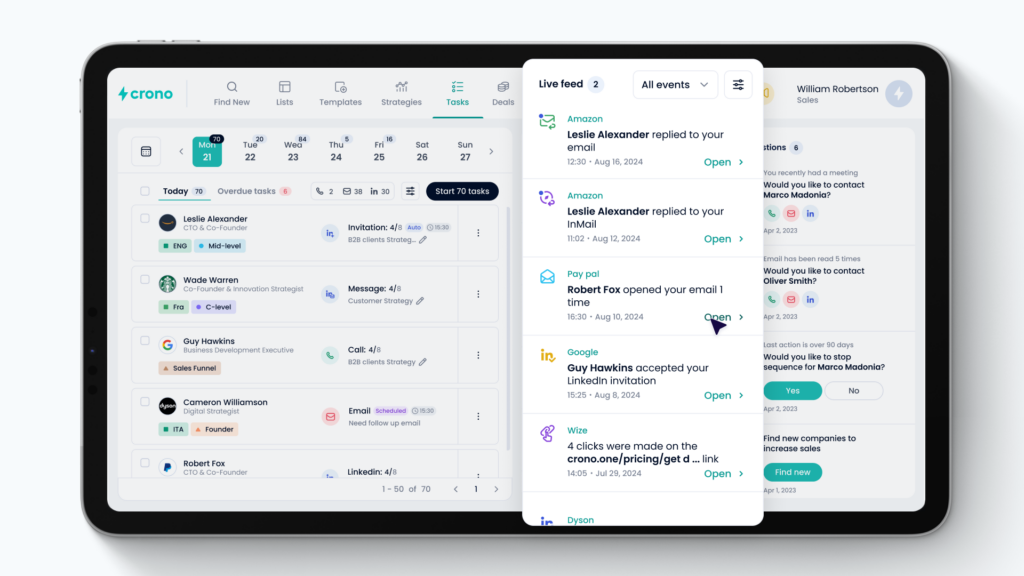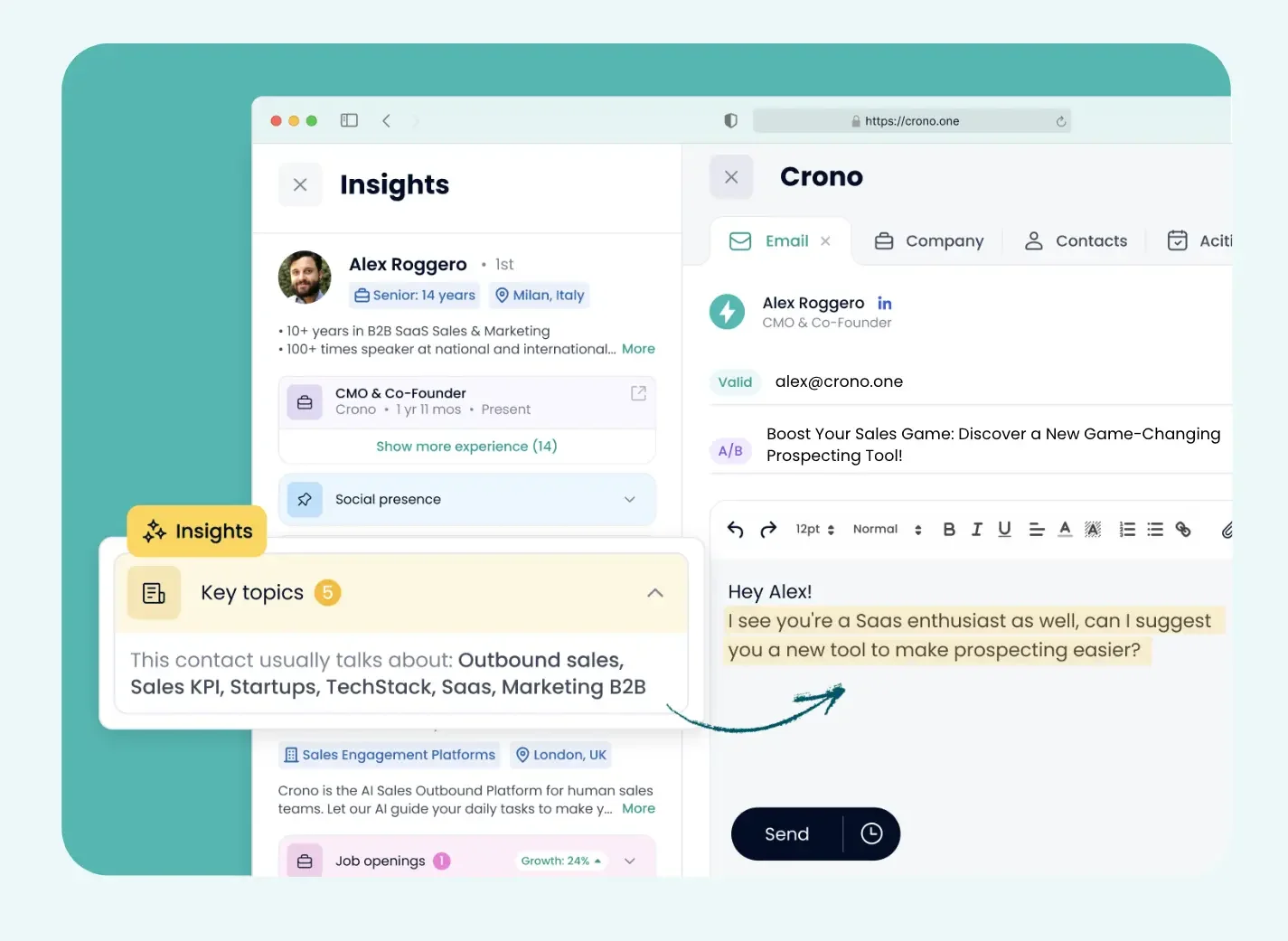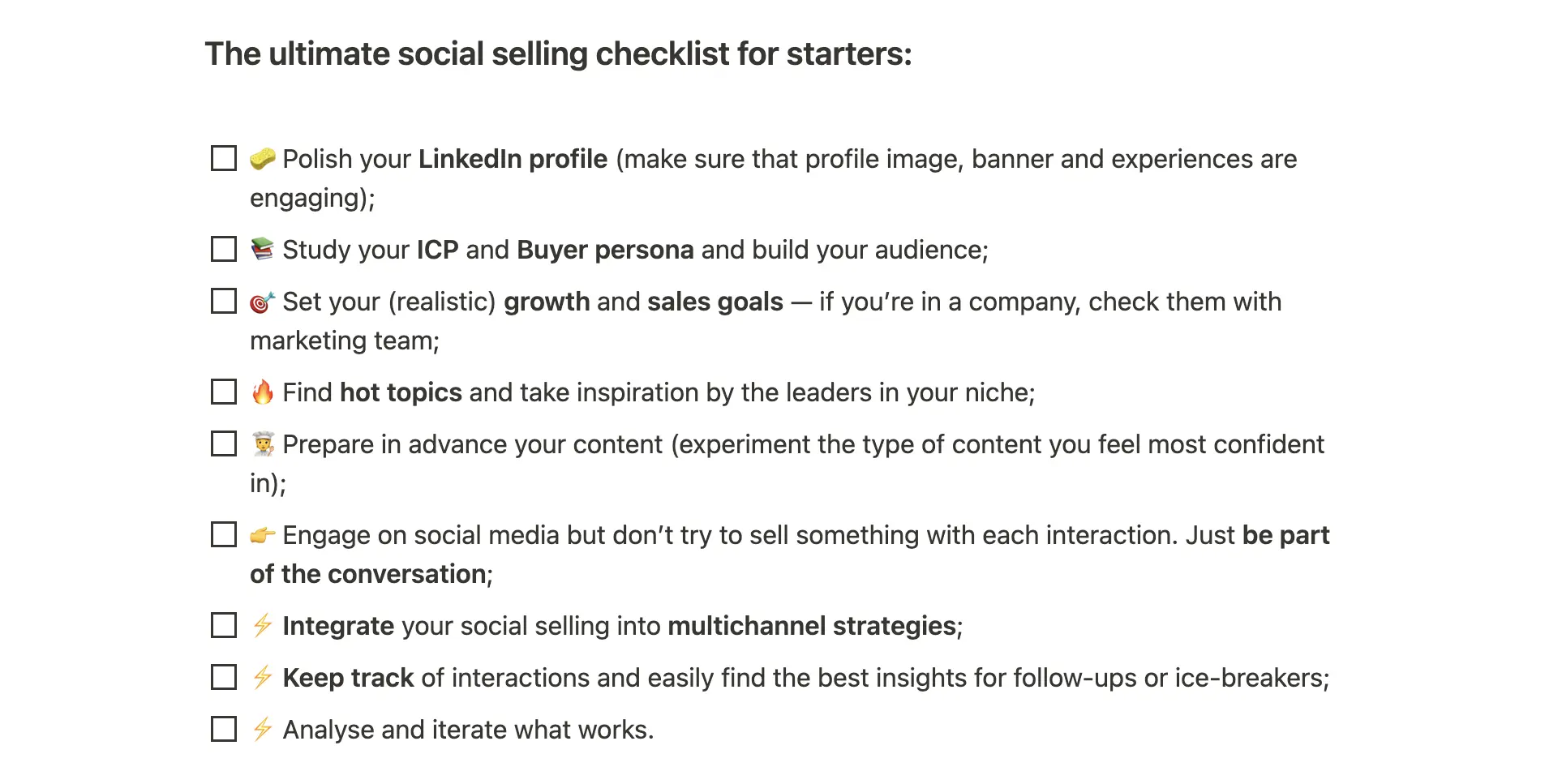Social Selling 1.01
Social selling has become indispensable in the B2B SaaS industry, where traditional sales methods alone fail to engage today’s well-informed buyers.
This strategy emphasizes relationship-building over hard selling, enabling sales teams to connect with prospects in more meaningful ways.
What are the best practices to integrate social selling into the sales process? Let’s find out.
Understanding Social Selling
Let’s start from the basics with the difference between Social Selling and Social Media Marketing.
Social selling is the process of using social networks to find, connect with, and nurture sales prospects. Unlike traditional sales methods that often rely on cold calling and mass emails, social selling focuses on building relationships through personalized engagement.
It’s distinct from social media marketing, as it prioritizes one-on-one interactions rather than broad outreach.
As buyer behaviour evolves, with more decision-makers conducting research online, sales teams must adapt by adopting social selling strategies that align with this self-directed buying process.
Buyers are more aware than ever about their role and how companies approach them, resulting in a tendency to appreciate even more a well-curated and personalized approach.
Equipping Your Sales Team
For successful social selling, equipping your sales team with the right tools and training is essential.
Tools like LinkedIn Sales Navigator and CRM systems integrated with social media can greatly enhance prospecting and lead nurturing.
Even better, a fully integrated sales platform like Crono enables the team to fully track all efforts together, making every move even more effective.

At the same, team training should be comprehensive, covering the identification of key prospects, creating and sharing engaging content, and using social media analytics to inform strategy.
Companies might consider internal training with the marketing team also about the importance of maintaining a consistent and professional personal brand across all social platforms to build trust and credibility with prospects.
That’s where tools for content creation, analytics and social media come in handy — make sure to check this list to find the best one for your needs.
Aligning with Sales Strategy
Social selling should not replace traditional sales methods but complement them, creating a more comprehensive and effective sales strategy.
For instance, insights gained from social media interactions can be used to personalize email outreach or to prepare for phone calls, ensuring that every touchpoint is relevant and engaging.
Integration is key — consistent messaging across all channels reinforces your brand’s value proposition, while social presence enhance the effectiveness of traditional methods.

This synergy leads to stronger relationships and higher conversion rates.
Content Creation in Social Selling
Content is the lifeblood of social selling, serving as both a conversation starter and a relationship builder.
Sales professionals should focus on sharing and creating content that addresses the specific pain points and interests of their prospects while adding their own points of view and personality.
For this purpose, personal branding is essential: from polishing your LinkedIn profile to creating your own palette and asset, every action matters. The more accurate you’ll be with positioning and branding, the better.
Don’t forget to focus also on a content strategy that aligns with sales goals, ensuring a steady flow of high-quality content that creates opportunities.
Personalized content sharing and meaningful engagement, position you as a trusted advisor rather than just another salesperson.
The key, once again, is consistency: success in social selling doesn’t come overnight.
Measure and adapt
Evaluating the effectiveness of your interactions is crucial to optimizing your strategy.
Key metrics to monitor include engagement rates, new connections made, and the influence of social interactions on lead generation and conversion rates.
Data and analytics are crucial but at the same time, don’t get mad over the algorithm. Try instead to find patterns in what works and what doesn’t and keep experimenting with formats.
Technology and Automation
AI, automation and your sales tech are really important to turn your connection and interaction into leads.
AI can streamline and help with content creation, but make sure to always add your personal touch.
The real twist is when automation and technology connect sales and social selling by creating smooth strategies that blend all channels and are perfectly synched.
The ultimate checklist
Once you have all this knowledge, the first thing to do is plan your social selling moves.
If your company has a marketing team, don’t forget to collaborate with it to align goals and get insights on your content.
For better results, check out Crono: lots of B2B sales top-voices are using it and integrating social selling into multichannel strategies. Be the next one.
And then, start simple and easy following these steps!


